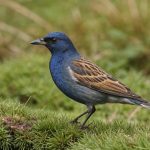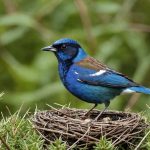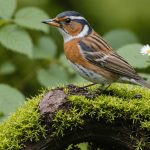Importance of Protecting Rare Bird Species
Understanding the significance of rare bird species is essential in maintaining ecological balance. These birds play vital roles in their ecosystems, such as seed dispersal, insect control, and pollination. Unfortunately, human activities, from urban development to intensive agriculture, continuously threaten these rare birds, particularly during their nesting season.
In the UK, practical steps for rare bird conservation include ensuring habitats remain undisturbed. Legal frameworks, like the Wildlife and Countryside Act, provide vital protection to these birds, especially during the vulnerable period of nesting. These laws make it illegal to damage or destroy active nests, offering crucial safeguards.
A lire également : Your Complete Guide to Reporting Rare Bird Sightings in the UK: Essential Tips and Guidelines
Ethical birdwatching practices also play a substantial role in conservation. Birdwatchers should maintain a respectful distance, especially during nesting season, to avoid disturbance. This practice not only minimizes stress on the birds but also protects them from potential threats, such as predation or nest abandonment.
Nesting season protection is critical. Efforts during this time, such as restricting human access to sensitive areas and conducting public awareness campaigns, help conserve these species for future generations. By promoting and adhering to birdwatching ethics and conservation laws, we aid in sustaining the biodiversity necessary for a healthy environment, reinforcing the collective duty to protect these irreplaceable avian treasures.
Avez-vous vu cela : Creating a Wildlife-Friendly Garden in the UK: A Guide to Attracting Birds and Small Mammals
Observing Birds Responsibly
Birdwatching is a joyful and rewarding activity, but it’s crucial to follow birdwatching guidelines to ensure it’s done ethically. Observing birds responsibly minimizes wildlife disturbance and helps preserve their natural behaviors. By adhering to these principles, enthusiasts can enjoy the beauty of avian life without causing harm.
Maintaining Distance
Maintaining appropriate distance is fundamental for responsible observation. Birds perceive humans as predators, so keeping the right distance is essential to avoid causing them stress. Recommended distances will vary depending on the species, but generally, maintaining at least a 25-metre gap is advised. By respecting these boundaries, you can help prevent distress and disturbance to the birds’ natural habits.
Optimal Viewing Techniques
Optimal viewing techniques involve patience and respect for the environment. The most effective strategy is to remain still and quiet, allowing birds to proceed with their natural activities. Avoid sudden movements and loud noises. Use natural cover such as bushes or foliage to blend into the environment without intruding.
Utilizing Technology for Observation
Utilizing technology can greatly enhance the experience and support responsible birdwatching practices. Tools such as binoculars and cameras allow for remote viewing. High-resolution lenses enable you to observe birds up close without physically getting closer. By integrating technology, birdwatchers can further minimize the risk of wildlife disturbance, ensuring a safe and enjoyable activity.
Understanding Nesting Seasons
Birdwatching enthusiasts often anticipate the bird nesting periods to observe rare UK bird species. Each species has distinct nesting habits, typically influenced by various factors such as weather and habitat. For example, the Common Swift tends to nest from early May to August, while the Puffin is more active from March to July. The timing of these periods can significantly affect seasonal birdwatching plans.
Different weather patterns play a crucial role in the nesting behaviours of birds. Warmer temperatures may accelerate nesting by providing ideal conditions for food availability and nesting site establishment. Conversely, harsh weather can delay nesting, as birds wait for safer conditions. Birdwatchers must remain adaptable, ready to adjust their schedules based on forecasts.
Seasonal awareness is vital for both birdwatchers and conservation efforts. For birdwatchers, understanding the seasonal patterns boosts chances of witnessing these incredible life stages, offering an enriching experience. By gaining insights into the nesting behaviour of UK bird species, enthusiasts can align their activities for optimal sightings. Furthermore, conservationists utilise this knowledge to protect vulnerable species during these critical periods.
In summary, keen knowledge of the bird nesting periods and how weather influences these can greatly enhance the seasonal birdwatching experience in the UK.
Minimizing Disturbance During Nesting
During nesting periods, ensuring minimal disturbance is crucial for the wellbeing of birds. Understanding and practicing proper birdwatching etiquette can greatly aid in achieving this goal. One primary action to avoid is getting too close to the nesting sites. Physical proximity can cause stress to the birds, potentially leading to nest abandonment, which poses a severe risk to chicks and eggs.
Best practices recommend maintaining a reasonable distance, typically guided by the use of binoculars or long-range cameras, to avoid close interaction. Another significant consideration is the importance of keeping pets leashed. Unleashed pets, particularly dogs, can inadvertently disturb nesting sites, as their presence is perceived as a threat by the birds. Ensuring pets stay clear of these areas supports a safer environment for bird life.
Educating fellow birdwatchers is also essential in minimizing disturbances. Sharing knowledge about appropriate behaviours and best practices ensures a collective effort towards conservation. Encourage others to adhere to these guidelines and emphasize the importance of keeping pets leashed. By promoting these protective practices, we can all enjoy observing these magnificent creatures while safeguarding their natural habitats. Understanding these measures fosters a respectful interaction with nature, enhancing the birdwatching experience for everyone involved.
Engaging with Local Conservation Efforts
Connecting with bird conservation organizations offers a promising path for contributing to wildlife preservation. These organizations play a critical role in safeguarding nesting birds, implementing strategies to mitigate threats, and promoting biodiversity. By aligning yourself with local wildlife initiatives, you can become part of a community dedicated to making a tangible impact.
Partnering with Conservation Groups
Building partnerships with local wildlife initiatives often starts with identifying organizations whose missions align with your interests. Many provide resources and guidance for individuals interested in contributing to their efforts. Engaging with them can range from attending meetings, providing financial support, to directly participating in field activities.
Volunteering Opportunities
Volunteering is a rewarding way to get involved and make a difference. You can aid bird conservation organizations through activities such as habitat restoration, bird surveys, or educational outreach. This hands-on involvement not only benefits local ecosystems but also enriches your understanding and appreciation of wildlife.
How to Report Threatened Species
As a birdwatcher, knowing how to report sightings of threatened species is vital. Organizations often have specific reporting mechanisms in place. By submitting detailed observations, you can aid researchers and conservationists in tracking species populations and informing protection efforts. This proactive involvement supports critical data collection and underscores the importance of community involvement in conservation.
Resources for Birdwatchers
Engaging in birdwatching requires access to a variety of resources that enhance the experience while respecting local biodiversity. UK birdwatchers benefit greatly from a selection of recommended guides and literature. Books like “British Birds: An Enthusiast’s Handbook” are rich in educational materials, offering detailed insights into the identification and habits of local avian species.
Online platforms provide invaluable birdwatching resources for tracking nesting seasons and spotting rare species. Websites, such as the RSPB’s NestWatch, offer user-friendly interfaces for logging sightings and contributing to broader conservation efforts. This connection to community-driven data helps birdwatchers stay informed about seasonal changes and shifts in species distribution.
Understanding local conservation information is crucial. Bird enthusiasts must adhere to regional regulations and guidelines to ensure the protection of wildlife habitats. Staying updated on this information can prevent unintentional disturbances to birds, particularly during the sensitive nesting seasons.
Here are some tips for engaging in birdwatching responsibly:
- Familiarise yourself with educational materials about your local area.
- Utilize online resources to track bird activity.
- Ensure that you’re aware of conservation guidelines and adhere to them.
By utilizing these resources, birdwatchers can enjoy their hobby while contributing positively to the environment.











